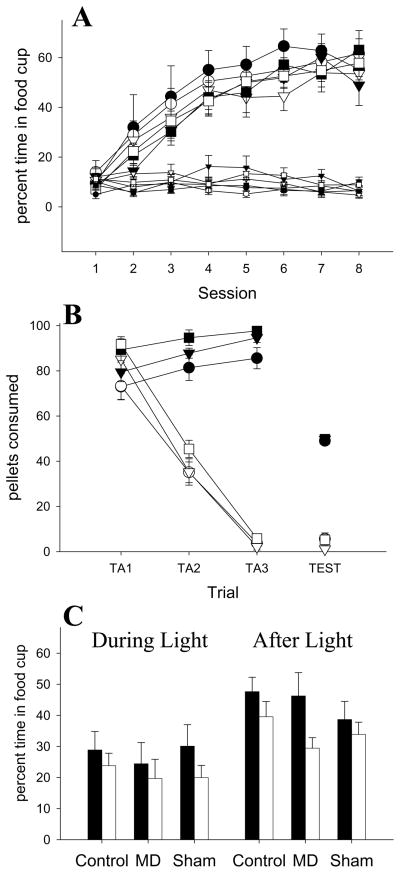Figure 3.
Experiment 1 behavioral performance. A: Acquisition of food cup responding prior to (small symbols) and during the light (large symbols) B: Acquisition of taste aversion. Taste aversion training in the beddingless cage is shown on the left with the connected lines. The taste aversion test in the experimental chamber is shown with the free-floating symbols on the right. On each training trial, 100 pellets were available, but only 50 pellets were available in the experimental chamber test. C: Responding in the Pavlovian devaluation test. Responding during the light is on the left and responding in the period after the light is on the right. Black symbols and bars represent Unpaired groups. White symbols and bars represent Paired groups. Circles represent animals with Control thalamic lesions, triangles represent animals with MD thalamic lesions and squares represent those with sham lesions.

